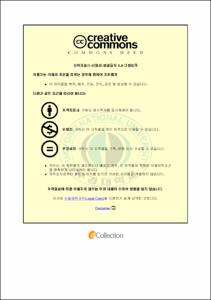Assessment of Groundwater Contamination Characteristics Using Hydrogeochemical and Geostatistical Analyses at a Coastal Area in Busan, Korea
- Abstract
- Suyeong-gu is located at the coastal area of Busan Metropolitan City, and it is vulnerable to seawater intrusion. The objective of this study is to assess the characteristics of groundwater contamination using hydrogeochemical, multivariate analyses (cluster, factor and discriminant analyses) and kriging analysis. The quantity of annual groundwater utilization is 1,493,000 ㎥ (4,090 ㎥/day) for 362 wells. The number of wells for living use is 281 wells, and its quantity is 88.3% (1,318,000 ㎥/year) of total groundwater utilization in the study area.
The Suyeong River is influenced by seawater to about 5.5 km upward from the Suyeong Bridge, and the Oncheon Stream is affected by seawater to about 1.6 km upward from the intersecting point of the Suyeong River and the Oncheon Stream. Groundwater discharge from the subway is 751,000 ㎥/year, and the sustainable development yield of groundwater is 951,000 ㎥/year. The total groundwater discharge from the ground is about 2.4 times the sustainable development yield of groundwater. The excessive withdrawal of groundwater from the ground brought about the severe groundwater drawdown and groundwater contamination around the subway tunnel in the study area.
By Piper's trilinear diagram analysis, the groundwater quality was classified into 5 types, i.e., Ca(HCO3)2, CaCl2, NaCl, NaHCO3, and CaSO4 types in the order. Ca(HCO3)2 type was the most predominant in the study area. NaCl type was produced mainly by the influence of seawater intrusion. CaCl2, NaHCO3 and CaSO4 types were generated from Ca(HCO3)2 type by seawater intrusion. Sulfur isotope analysis reconfirmed that groundwater discharge from the subway was affected by salinized the Suyeong River, and that groundwater around the coastal area was contaminated by seawater.
By cluster analysis, Group 1 is relatively non-contaminated groundwater, Group 2 is contaminated groundwater by seawater or urban sewage, etc, and Group 3 is considerably contaminated groundwater by seawater. By factor analysis, the major contaminant source is seawater, the second is NO3- component related with urban sewage. Other contaminant sources are Mn component from industrial materials, F component from geology, and Fe component from rusted borehole casing. By discriminant analysis, the three groups from cluster analysis gave 100% correct assignation for the standard, forward and backward stepwise modes. At the backward stepwise modes, water temperature, pH, EC, Na+, K+, Mg+2, HCO3-, and F components were the most significant parameters for the discrimination of contaminants.
This study represented that hydrogeochemical and geostatistical (chemometrics and kriging) analyses were very indispensable to identify groundwater contamination sources and origins, as well as to assess groundwater quality and spatial characteristics.
- Issued Date
- 2012
- Awarded Date
- 2012. 2
- Type
- Dissertation
- Publisher
- 대학원
- Affiliation
- 환경지질과학과
- Department
- 대학원 환경지질과학과
- Advisor
- 정상용
- Table Of Contents
- 1. Introduction 1
1.1. Backgrounds and objectives 1
1.2. Research methods 4
2. Materials and methods 9
2.1. Study area 9
2.1.1. Location and administrative district 9
2.1.2. Population 14
2.1.3. Weather 15
2.2. Topography and hydrogeology 17
2.2.1. Topography 17
2.2.2. Hydrogeology 17
2.3. Geostatistical analysis 20
2.3.1. Kriging 20
2.3.2. Multivariate analysis 27
2.4. Hydrogeochemical analysis 31
3. Results and discussions 34
3.1. Groundwater utilization 34
3.1.1. Classification of groundwater well 34
3.1.2. Quantity of groundwater utilization 41
3.1.3. Distribution of groundwater utilization 44
3.2. Surface water 50
3.2.1. Water quality of the Suyeong River 52
3.2.2. Water quality of the Oncheon Stream 56
3.3. Groundwater discharge from the subway 61
3.3.1. Quantity and quality of groundwater discharge 62
3.3.2. Synthetic water quality of groundwater discharge 67
3.4. Groundwater level and quality 69
3.4.1. Groundwater level 69
3.4.2. Groundwater quality 86
3.4.3. Automatic monitoring 101
3.5. Hydrogeochemical analysis 113
3.5.1. Statistical analysis of groundwater component 115
3.5.2. Characteristics of groundwater quality 123
3.5.3. Type of groundwater quality 140
3.5.4. Sulphate isotope 143
3.6. Multivariate analysis 149
3.6.1. Cluster analysis 149
3.6.2. Factor analysis 155
3.6.3. Discriminant analysis 171
3.7. Results of hydrogeochemical and geostatistical analyses 176
4. Conclusions 180
References 184
Abstract (in Korean) 192
Acknowledgements 194
- Degree
- Doctor
- Files in This Item:
-
-
Download
 Assessment of Groundwater Contamination Characteristics Using Hydrogeochemical and Geostatistical An.pdf
기타 데이터 / 7.19 MB / Adobe PDF
Assessment of Groundwater Contamination Characteristics Using Hydrogeochemical and Geostatistical An.pdf
기타 데이터 / 7.19 MB / Adobe PDF
-
Items in Repository are protected by copyright, with all rights reserved, unless otherwise indicated.